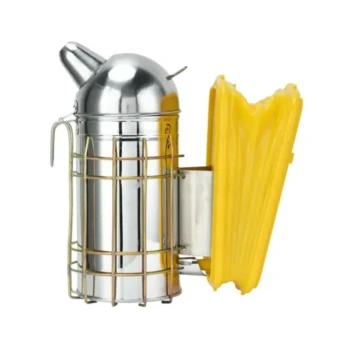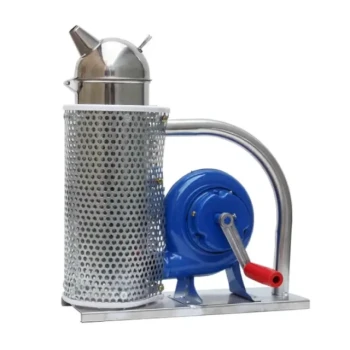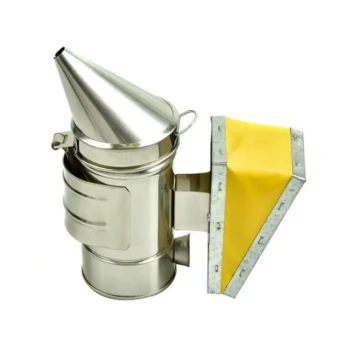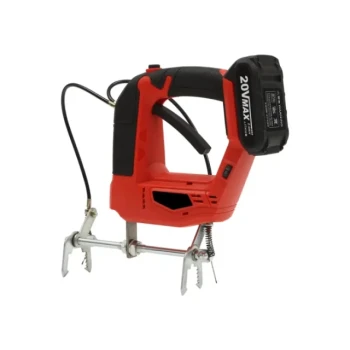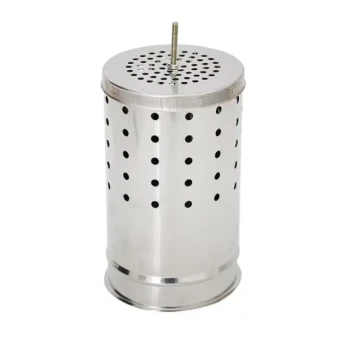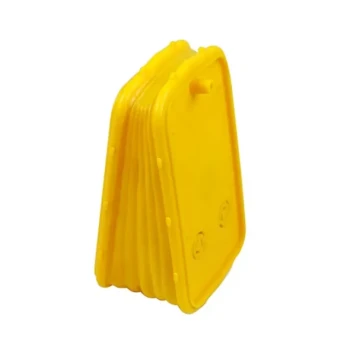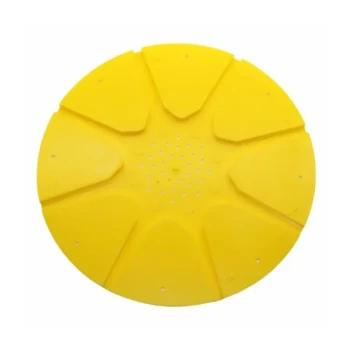The key to applying smoke is to use it as a precise communication tool, not a blunt instrument. It should be applied gently and strategically at the hive entrance and across the top of the frames to interrupt the bees' defensive response before and during an inspection.
Your goal is not to sedate the bees, but to mask their alarm pheromones and trigger a natural feeding instinct. This makes them significantly calmer and less likely to sting, enabling a smooth and peaceful inspection for both you and the colony.
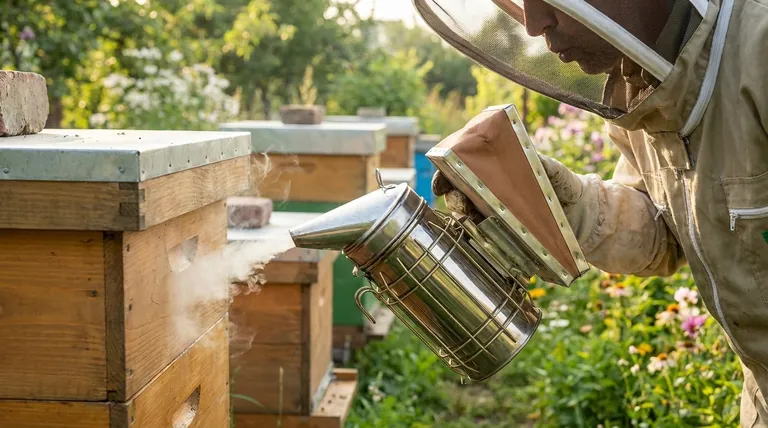
The Principle: Why Smoke Calms Bees
Before learning the "how," it is critical to understand the "why." Proper technique is built on understanding the bees' reaction.
Interrupting the Alarm System
When a bee feels threatened or is crushed, it releases an alarm pheromone. This chemical signal, which smells like bananas to humans, alerts other bees to a potential danger, putting the entire colony on high alert and triggering defensive behavior like stinging.
Cool, white smoke effectively masks this pheromone. It overwhelms the bees' sensitive antennae, preventing the alarm signal from spreading throughout the hive. This stops a chain reaction of defensiveness before it can begin.
Triggering a Feeding Response
Smoke also triggers a primal survival instinct. The bees interpret the smoke as a sign of a nearby forest fire, a major threat to their home.
In response, they begin to gorge themselves on honey. This is their preparation to potentially abandon the hive and find a new home, taking as much of their food stores with them as possible. A bee with a full abdomen is physically less able to bend its body to sting and is generally far more docile.
A Step-by-Step Guide to Proper Application
A successful inspection relies on a calm, methodical approach. Apply smoke with patience and purpose.
Step 1: The Initial Approach
Before you even touch the hive, give two to three gentle puffs of cool, white smoke into the main entrance. This alerts the guard bees to your presence and begins the process of masking any initial alarm pheromones.
Wait for 30 to 60 seconds before proceeding. This gives the smoke time to circulate and have the desired effect on the colony.
Step 2: Opening the Hive
After waiting, use your hive tool to crack the outer cover and then the inner cover, opening it just an inch or two.
Direct one or two gentle puffs of smoke across the top bars of the frames. This calms the bees at the top of the hive who are about to be exposed to light and a sudden environmental change.
Step 3: During the Inspection
As you work your way through the hive, use smoke sparingly. The goal is to keep the bees calm, not to drive them away entirely.
If bees begin to line the tops of the frames and look up at you, or if their buzzing audibly increases in pitch, that is your cue. Apply one small puff directed down and between the frames to gently encourage them to move down, clearing your workspace.
Common Pitfalls to Avoid
How you don't use smoke is just as important as how you do. Misapplication can cause more harm than good.
Using Too Much Smoke
This is the most common mistake. Over-smoking can agitate the colony instead of calming it. It can also contaminate the taste of the honey and, in extreme cases, harm the queen or unsealed brood. Less is almost always more.
Using "Hot" or Wet Smoke
The ideal smoke is cool and white. Hot smoke, which often contains sparks, can burn and kill bees. Thin, wispy, or wet smoke is ineffective. Ensure your smoker is lit correctly and producing a thick, pleasant-smelling plume.
Not Aiming Strategically
Avoid puffing smoke directly onto the bees, especially on a frame you are inspecting. This can cause them to panic and run. The smoke should be directed between frames and used to gently herd the bees where you need them to go.
Making the Right Choice for Your Goal
Adjust your technique based on the temperament of the hive and the purpose of your inspection.
- If your primary focus is a routine, calm inspection: A few gentle puffs at the entrance and under the lid may be all you need. Use additional smoke only if the bees' behavior tells you it's necessary.
- If your primary focus is managing a known aggressive hive: A bit more smoke may be required, but the principles remain the same. Remain calm and apply smoke gently but deliberately whenever you see signs of agitation.
- If your primary focus is a quick check (like refilling a feeder): A single puff at the entrance and one under the lid is likely all that is required for this brief intrusion.
Ultimately, using smoke is about working in partnership with your bees, creating a calm environment for a safe and productive inspection.
Summary Table:
| Step | Purpose | Action | Key Tip |
|---|---|---|---|
| Initial Approach | Alert guard bees, mask initial alarm pheromones. | 2-3 gentle puffs into the hive entrance. | Wait 30-60 seconds before opening the hive. |
| Opening the Hive | Calm bees at the top of the hive before exposure. | 1-2 gentle puffs across the top bars of the frames. | Open the cover just an inch or two first. |
| During Inspection | Maintain calm, gently encourage bees to move down. | 1 small puff between frames if bees show agitation. | Use sparingly; let bee behavior guide you. |
Conduct safer, more productive hive inspections with professional-grade equipment from HONESTBEE.
Whether you manage a commercial apiary or distribute beekeeping supplies, the right tools are essential for success. Our wholesale-focused operations provide durable, reliable smokers and hive tools designed for frequent, professional use.
Let us help you equip your operation for efficiency and bee safety.
Contact our wholesale team today for a quote!
Visual Guide
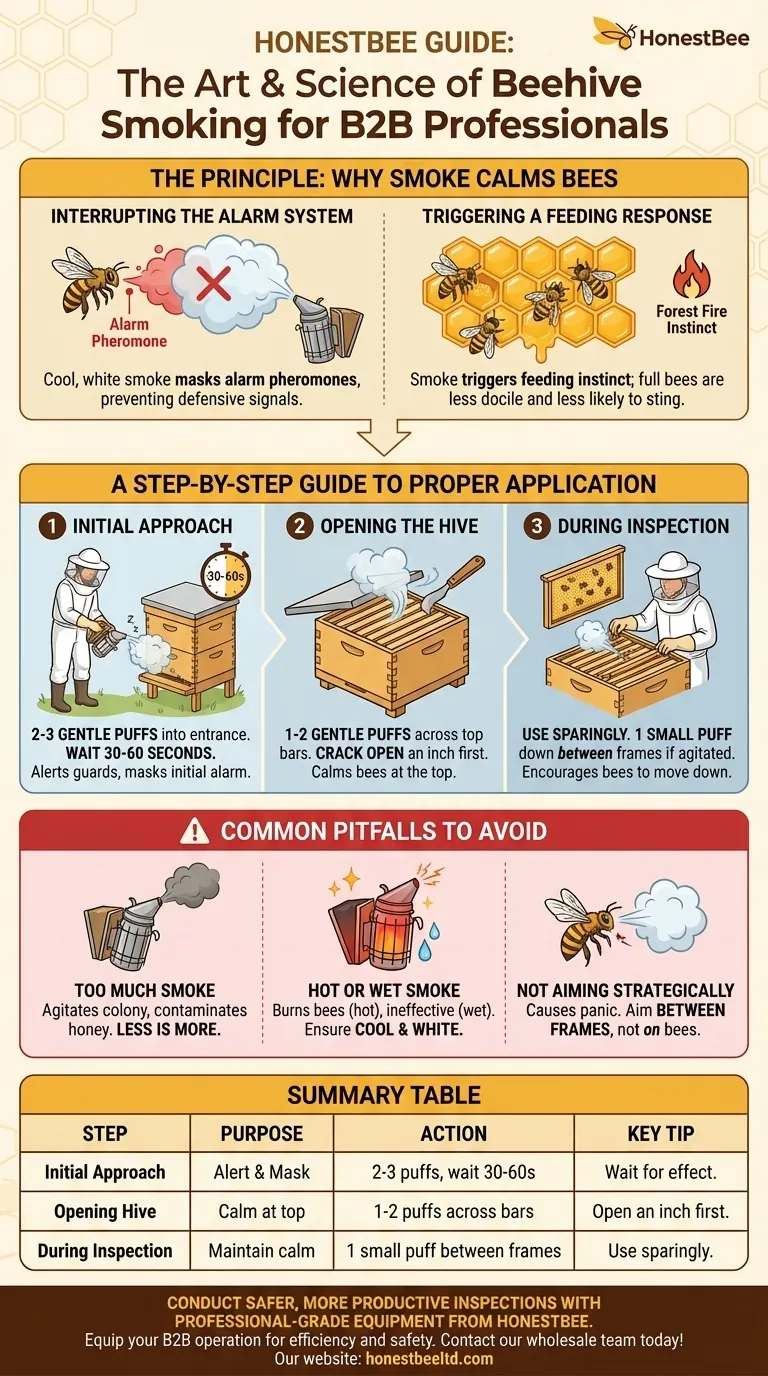
Related Products
- European Stainless Steel Bee Smoker for Honey Bee Hive
- Premium Traditional Copper Bee Smoker with Bellows
- Professional Bee Smoker with Elongated Spout and Durable Bellows for Beekeeping
- Heavy-Duty Bee Smoker with Durable Plastic Bellows for Beekeeping
- Heavy Duty Manual Bee Smoker Blower for Beekeeping
People Also Ask
- What factors should be considered when choosing a bee smoker? Find the Right Tool for Safe, Effective Hive Management
- What are the advantages of a high-quality bee smoker? Achieve Calm, Confident Hive Management
- What are the benefits of cleaning a bee smoker? Ensure Hive Safety and Bee Health
- Can you use too much smoke on bees? The Right Way to Use a Bee Smoker for Calm Inspections
- What are the features of a recommended bee smoker? A Guide to Safety, Durability & Performance



